Solar wind parameters in 24 hours to 00:30 UTC on April 17, 2024, continued to be enhanced by a passing coronal mass ejection (CME) which impacted Earth around 17:25 UTC on April 15 (launched from the Sun on April 12). Two more CMEs, produced on April 14 and 15, are expected to make a combined impact at around 00:00 UTC on April 18.
Total magnetic field strength was mostly between 7-13 nT. The Bz component was predominantly southward, with a maximum deflection of -12 nT, while the solar wind speeds remained low, ranging between 350 – 400 km/s for most of the day.
Solar wind conditions are expected to trend towards nominal levels mid-day to late on April 17. Early on April 18, additional enhancements are expected due to the anticipated arrival of CMEs that left the Sun on April 14 and 15. Waning CME conditions are likely on April 19.
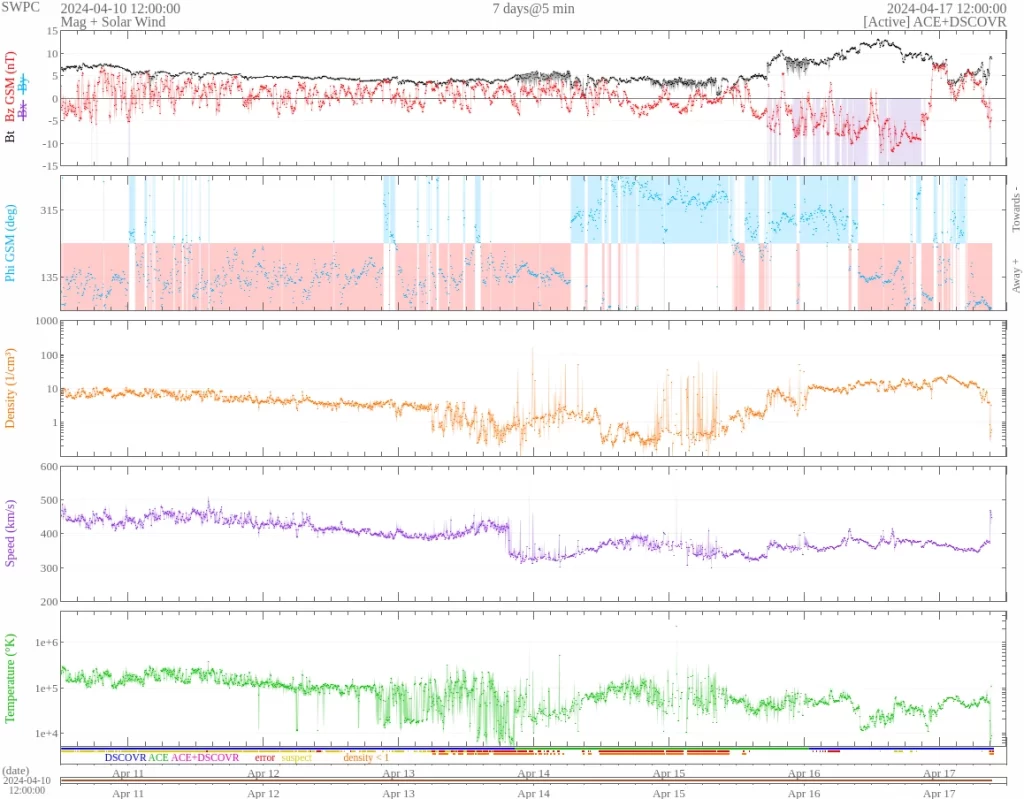
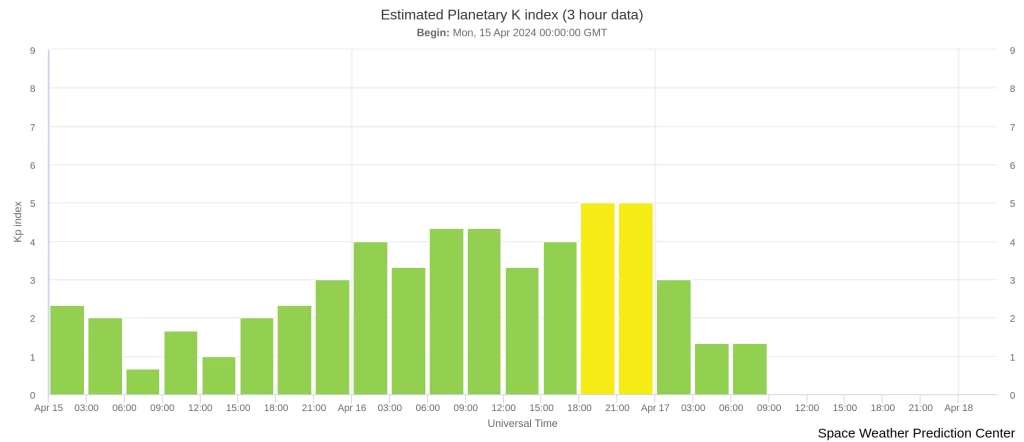

Under the CME influence, the geomagnetic field ranged from unsettled to G1 – Minor levels over the same period.
The geomagnetic field is expected to continue at unsettled to G2 – Moderate storm levels early on April 17 with continued CME influences. G1 – Minor geomagnetic storm conditions are likely on April 18 due to the anticipated arrival of CMEs that left the Sun on April 14 and 15. Quiet to unsettled conditions are likely on April 19 as CME influence wanes.
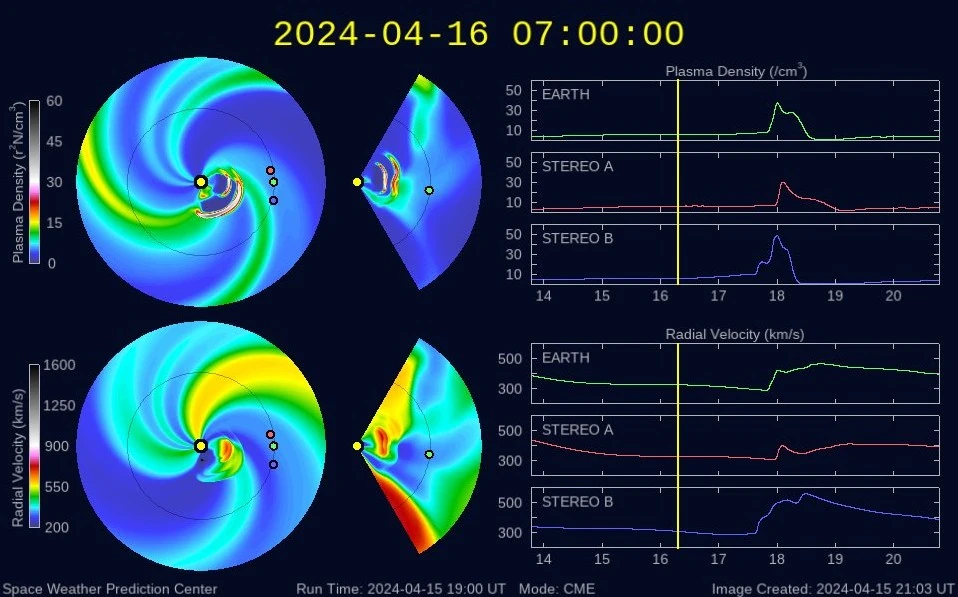

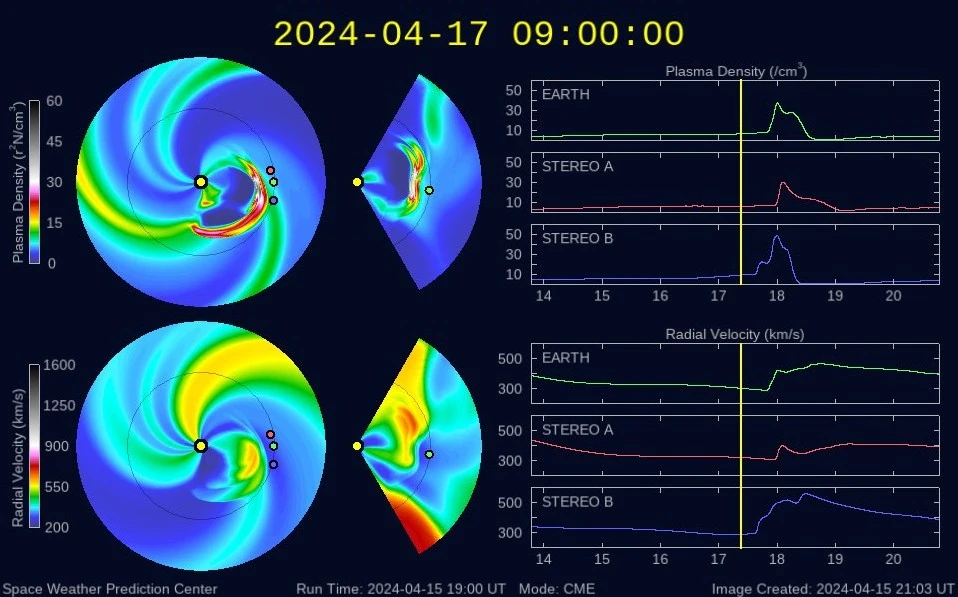

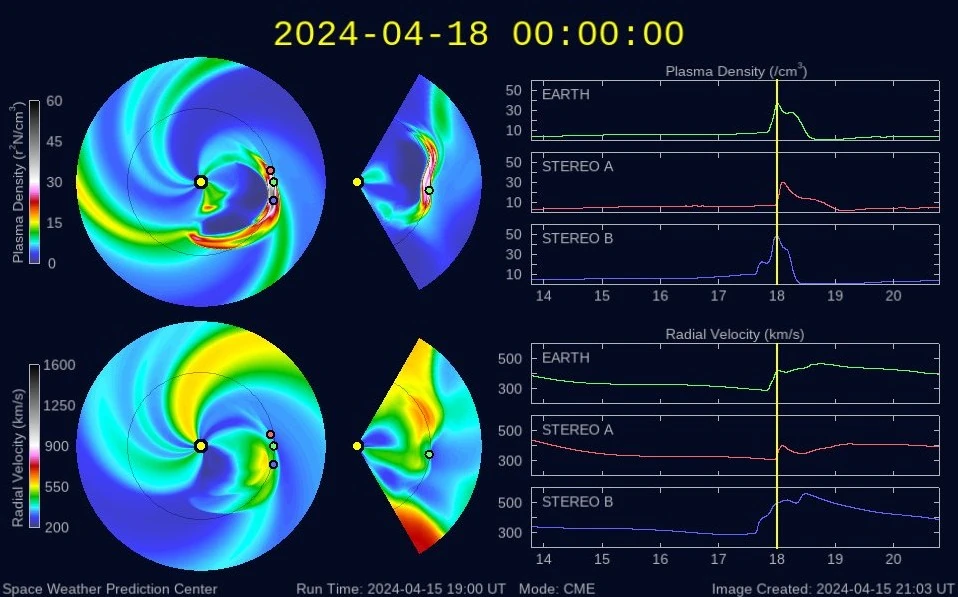

Solar activity was at moderate levels through 00:30 UTC today. Region 3643 (beta-gamma) produced the largest flare of the period, an M1.1/2n (R1 – Minor) at 18:02 UTC on April 16. Region 3643 along with Region 3639 (beta-gamma-delta) exhibited the most growth on the visible disk.
Newly numbered Region 3644 (beta) rotated onto the visible disk from the E limb while additional spots were observed rotating around the E limb.
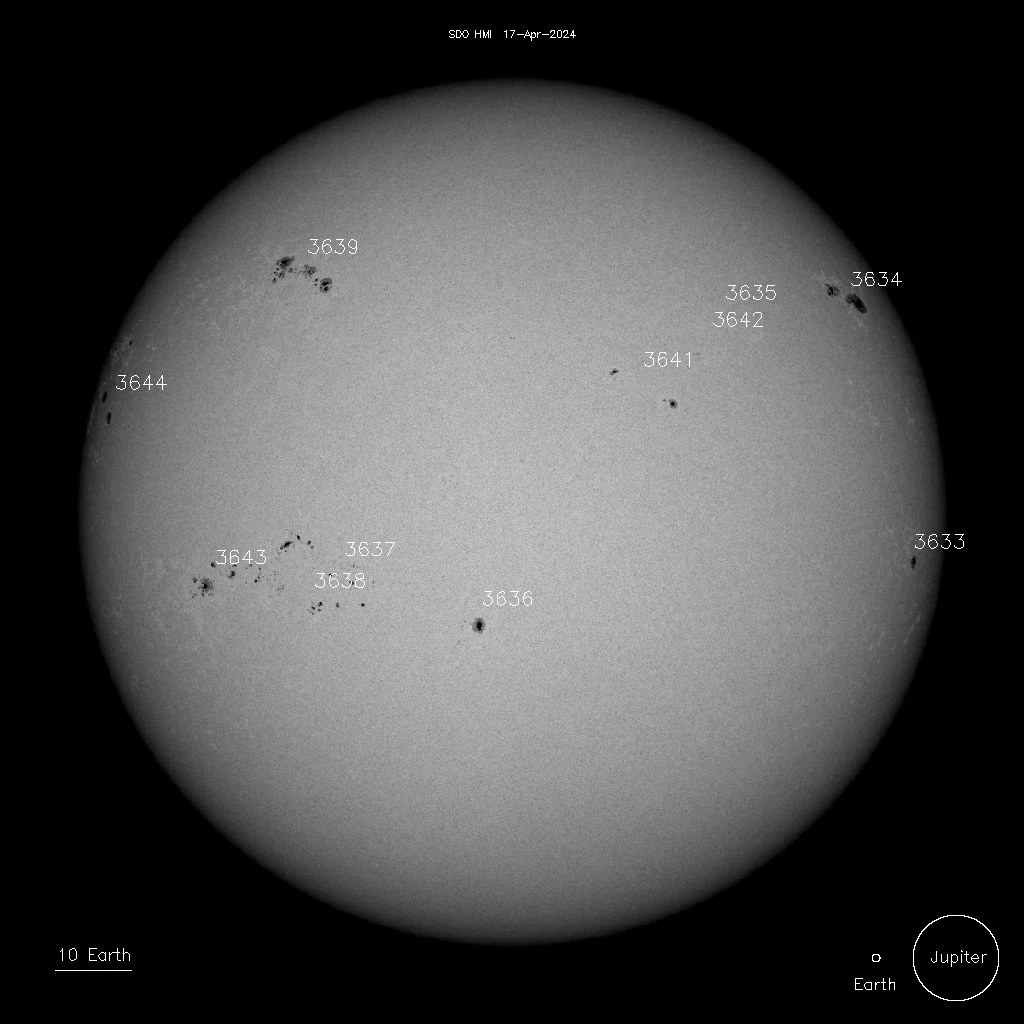

3633 – Beta
3634 – Beta
3635 – Alpha
3636 – Beta
3637 – Beta-Delta
3638 – Beta
3639 – Beta-Gamma-Delta
3641 – Beta
3642 – Beta
3643 – Beta-Gamma
3644 – Beta
Additional activity included an approximately 10-degree filament eruption near S50E25 beginning after 19:00 UTC on April 16 but further coronagraph imagery is needed to analyze any CME associated with the event, SWPC forecasters said.
Solar activity is forecast to be moderate, with M-class flares likely (65%) and a slight chance for an X-class flare (15%) through April 19.
References:
1 Forecast discussions issued by SWPC from April 14 – 17, 2024
Featured image: NASA SDO/AIA 304, Helioviewer, The Watchers. Acquired at 10:36 UTC on April 14, 2024
Two incoming CMEs to combine with CH HSS and produce G1 – Minor geomagnetic storming
Sunday, April 14, 2024
Long-duration M9.4 solar flare erupts from Region 3615
Sunday, March 31, 2024
Strong X1.1 solar flare erupts from AR 3615
Thursday, March 28, 2024
Strong M6.1 solar flare erupts from Region 3615
Thursday, March 28, 2024
Strong M7.1 solar flare erupts from Region 3615
Thursday, March 28, 2024
Major, long-duration X1.1 solar flare produces Earth-directed CME
Saturday, March 23, 2024
Strong M7.4 solar flare erupts from AR 3615
Wednesday, March 20, 2024